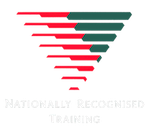RTO 40966
PMASUP236 - Operate vehicles in the field
Course Elements and Performance Criteria
1.0 Prepare vehicle and secure load
1.1 Conduct vehicle familiarisation checks before starting journey
1.2 Note and rectify any defects, where possible, or report vehicle for further attention/repair
1.3 Ascertain that all required fuel, water and other supplies required for the journey are available and in useable order
1.4 Inspect all ancillary equipment and operational accessories to ensure they have been attached or secured in a safe and agreed manner
1.5Secure load, including external loads, rear tray, roof racks, and any loads within the vehicle, using appropriate securing equipment
2.0 Undertake Journey
2.1 Familiarise oneself with the route to ensure that an appropriate route has been determined
2.2 Interpret access manuals and topographical maps in order to obtain required information for journey
2.3 Obtain relevant authorisations/notifications and accesses before starting the journey
2.4 Confirm and/or clarify or communicate journey details with relevant company personnel
2.5 Monitor driving conditions and requirements constantly, to meet any changes in terrain, weather conditions and road conditions and requirements
2.6 Monitor and maintain fluid levels and air pressures to ensure safe and efficient vehicle operations
2.7 Monitor vehicle constantly for any malfunctions or factors that may affect vehicle performance
2.8 Maintain vehicle speeds within all stated limits and road condition limitations to minimise the risk of personal injury, environmental damage and load damage
2.9 Maintain communication as required with the relevant company personnel to advise of progress and journey status
2.10 Ensure seatbelts are worn by all personnel while the vehicle is in motion
3.0 Operate Vehicle
3.1 Apply knowledge of vehicle differences to the driving requirements of 4WD and conventional vehicles
3.2 Adhere to general principles of four wheel driving in negotiating a variety of terrains and driving conditions
3.3 Use defensive driving techniques
3.4 Observe additional precautions for night driving
3.5 Drive to suit road conditions
3.6 Observe rules prohibiting driving under the influence of alcohol and other performance inhibiting substances
4.0 Finalise Journey
4.1 Communicate and confirm termination of journey with the relevant company personnel
4.2 Visually inspect the vehicle to ensure that vehicle is in good repair and order
4.3 Unsecure trailer loads and prepare for unloading utilising the agreed uncoupling process
4.4 Report faults or damage to vehicle to appropriate personnel
5.0 Recover Vehicle
5.1 Identify and assess options for recovery of an immobilised vehicle
5.2 Select and apply appropriate method of vehicle recovery
5.3 Operate recovery equipment safely
5.4 Perform a battery 'jump start' safely
5.5 Observe safety precautions when rigging cables and chains
5.6 Change a wheel on a properly jacked vehicle
6.0 Maintain Vehicle Safety
6.1 Observe appropriate speeds for the road conditions
6.2 Observe site-specific vehicle entry restrictions
6.3 Follow appropriate search and rescue notification procedures
6.4 Follow appropriate procedures for passing large or heavy vehicles

